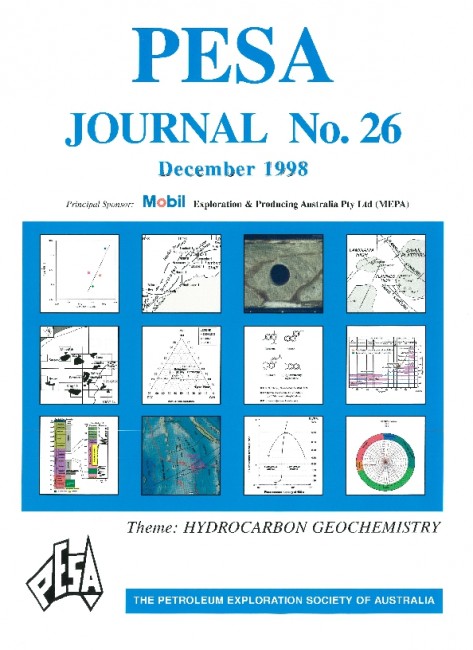Publication Name: PESA Journal No. 26
Authors: John Scott and Birgitta Hartung-Kagi
Publication Volume: 26
Date Published: December 1998
Number of Pages: 16
Reference Type: Journal Article
Abstract:
Biomarker patterns as determined by GC and GC-MSanalysis, in particular the character of isoprenoids, steranes
and triterpanes, provide a powerful tool for regional oil-oil
and oil-source correlations in Western Australia, when
interpreted in the geological context. Biomarker studies,
combined with geological analyses, show that most of the
oils in Western Australia are derived from source rocks
which accumulated in open-marine depositional
environments, although their sources contain a significant
input of terrestrially derived organic material. Upper
Jurassic source rocks have produced most of the oils in the
Carnarvon Basin and probably also the Bonaparte Basin.
Marine Lower Cretaceous sources in the Browse and
Bonaparte Basins also contribute to reservoired oils, both of
a commercial and sub-commercial nature. Relatively minor
quantities of oil in the onshore Canning Basin are derived
from Ordovician, Devonian and possibly Carboniferous
source rocks, all of open marine facies. Pro-delta marine
facies of the Jurassic and marine Triassic source facies are
also responsible for some small oil accumulations and
shows in Western Australia. Oils derived from highly
carbonaceous mudstones, siltstones and high-ash coal facies
of deltaic and continental-alluvial facies are rare and
volumetrically insignificant, compared to those derived
from open-marine facies. This is surprising, as these
sequences commonly appear to contain much richer, more
oil-prone source rocks than the generally modest-quality
marine source facies.


